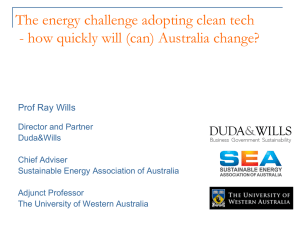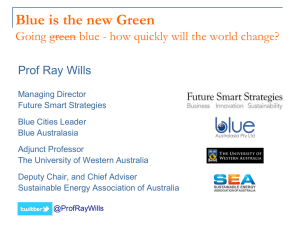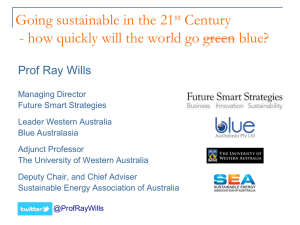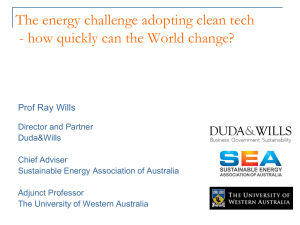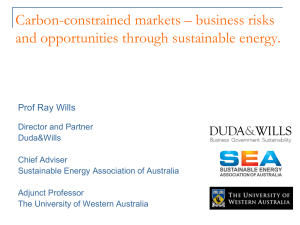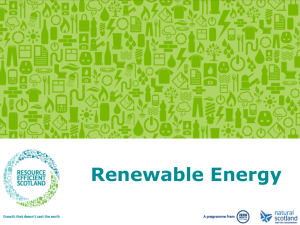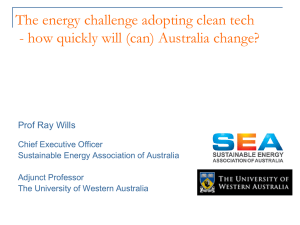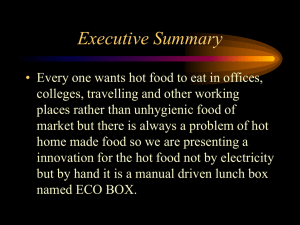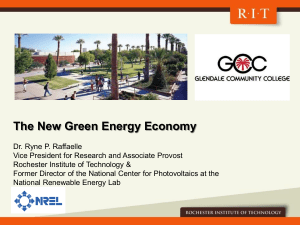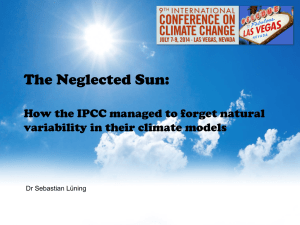Wills-adoptingcleantech-EPA
advertisement
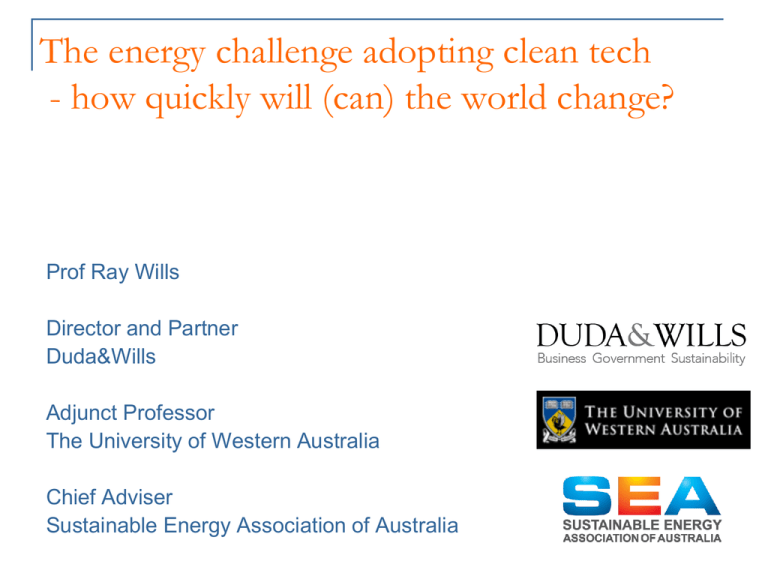
The energy challenge adopting clean tech - how quickly will (can) the world change? Prof Ray Wills Director and Partner Duda&Wills Adjunct Professor The University of Western Australia Chief Adviser Sustainable Energy Association of Australia Reconstruction of Regional and Global Temperature for the Past 11,300 Years Shaun A. Marcott,* Jeremy D. Shakun, Peter U. Clark, Alan C. Mix 2013, Science 339, 1198 Adoption of technology The natural turnover and retirement of appliances, buildings and vehicles can bring about a modest penetration of sustainable energy in the next ten years. However, adoption of new technology is often not just ‘natural’ The transition to sustainable energy, like many new technology shifts, will be more rapid with changes favoured by: policy measures and regulation; consumer sentiment; pricing advantage. Roger’s diffusion curve Technology adoption rates – US Will electric cars be dishwashers or VCRs? (Will there ever be any more dishwashers??) NY Times Technology adoption rates - vehicles Zoepf 2011 Technology adoption - manufacturers Zoepf 2011 Technology adoption rates - vehicles Zoepf 2011 Technology adoption rates Marked decrease in developmental lag Innovation/development of new products Supply side capabilities Market competition Growing consumer expectations Higher level of communication between consumers - blogspace Fleet/building/operations managers – and CFOs Regulation Energy security Renewable energy growth Data IEA 0 1995 1996 1997 1998 1999 2000 2001 2002 2003 2004 2005 2006 2007 2008 2009 2010 2011 2012 2013 2014 2015 2016 2017 Global renewables 2013? 600 500 400 Wind 300 Solar Wind - est GWEC 200 Solar - est 100 Data UNEP Electricity generation - Europe Electricity generation - UK Electricity generation - Australia Australian electricity demand 2012… Data AEMO Electricity market projections – WA Sustainable energy and energy efficiency Energy efficiency in all forms Distributed, renewable energy Known costs, resource life 1000++ years Stored energy in commodities, desal Energy storage key to: improved energy delivery increased reliability reduced emissions Technology energy use www.epri.com Global electricity growth Trends in car prices and CO2 2002-2010 How clean are Europe’s cars? Global renewables Rapid change - Personal mobility Private transport Fuel efficiency, other energy sources Transport Energy storage key New technologies may be disruptive Electric mass transit Siemens Bordeaux light rail Bombardier wireless light rail Slim Ride -15 passengers Series 700 Shinkansen train – 285 km/h Electric mass transit Commercial vehicles Smith Newton electric truck Mega electric diesel hybrids London Bus Haul Pak + Earthmover Honda prime mover BYD Electric forklift Oshkosh Military Vehicle Flying and floating fuels February 25, 2008 – Virgin Atlantic Stages the First Biofuel Flight October 30, 2007 - U.S.A.F. Tests New Synthetic Fuel on Plane February 14, 2011 – Qantas follows US Military to algae biofuels September 13, 2011 – US Navy announces by 2016 Green Strike Group, powered by renewable diesel-electric engines, nuclear power and aviation biofuels, is able to operate independent of fossil fuel supply line threat or disruption Smart grids, smart houses (and farms) Integrated energy planning Smart grids to coordinate the actions of devices such as loads & generators Green cities Global Australia Tianjin Eco-City China Ulsan Ecocity Korea Masdar City UAE City of Sydney – 70% CO2 reduction by 2030 City of Melbourne Stirling City Centre, Perth City of Fremantle Yanchep – 2 x 100 000 Local government critical Solar on Australian homes 1400000 3000000 1200000 2500000 1000000 2000000 800000 600000 400000 Capacity (kW) Number1000000 (est.) Capacity (est.) Dec-13 Sep-13 Jun-13 Mar-13 Dec-12 Sep-12 Jun-12 Mar-12 Dec-11 Sep-11 Jun-11 2001-2010 Dec-13 Sep-13 Jun-13 Mar-13 Dec-12 Sep-12 Jun-12 Mar-12 Dec-11 Sep-11 Jun-11 Mar-11 2001-2010 0 Mar-11 500000 200000 0 1500000 Number 955,614 solar installs in Australia, total 2.31 GW of capacity; output estimated 2500 GWh of electricity in the 12 months to November 2012. WA - 127 000 rooftops with solar, a total of 275 MW of solar capacity Mandurah (postcode 6210) – over 6300 homes, 11.7 MW of capacity Canning Vale area (postcode 6155) and the Wanneroo area (postcode 6055) next two largest - similar numbers ~ 4000 homes and ~ 8 MW. Solar on Australian homes WA - 104 000 rooftops with solar, a total of 218 MW of solar capacity Mandurah (postcode 6210) - over 5200 homes and 9.4 MW of capacity Canning Vale area (postcode 6155) and the Wanneroo area (postcode 6055) next two largest - similar numbers 3200 homes and 6.4 MW. Solar on WA homes City of Cockburn Solar on your home Solar in South Australia When the winds of change blow, some people build walls and others build windmills. Chinese proverb
